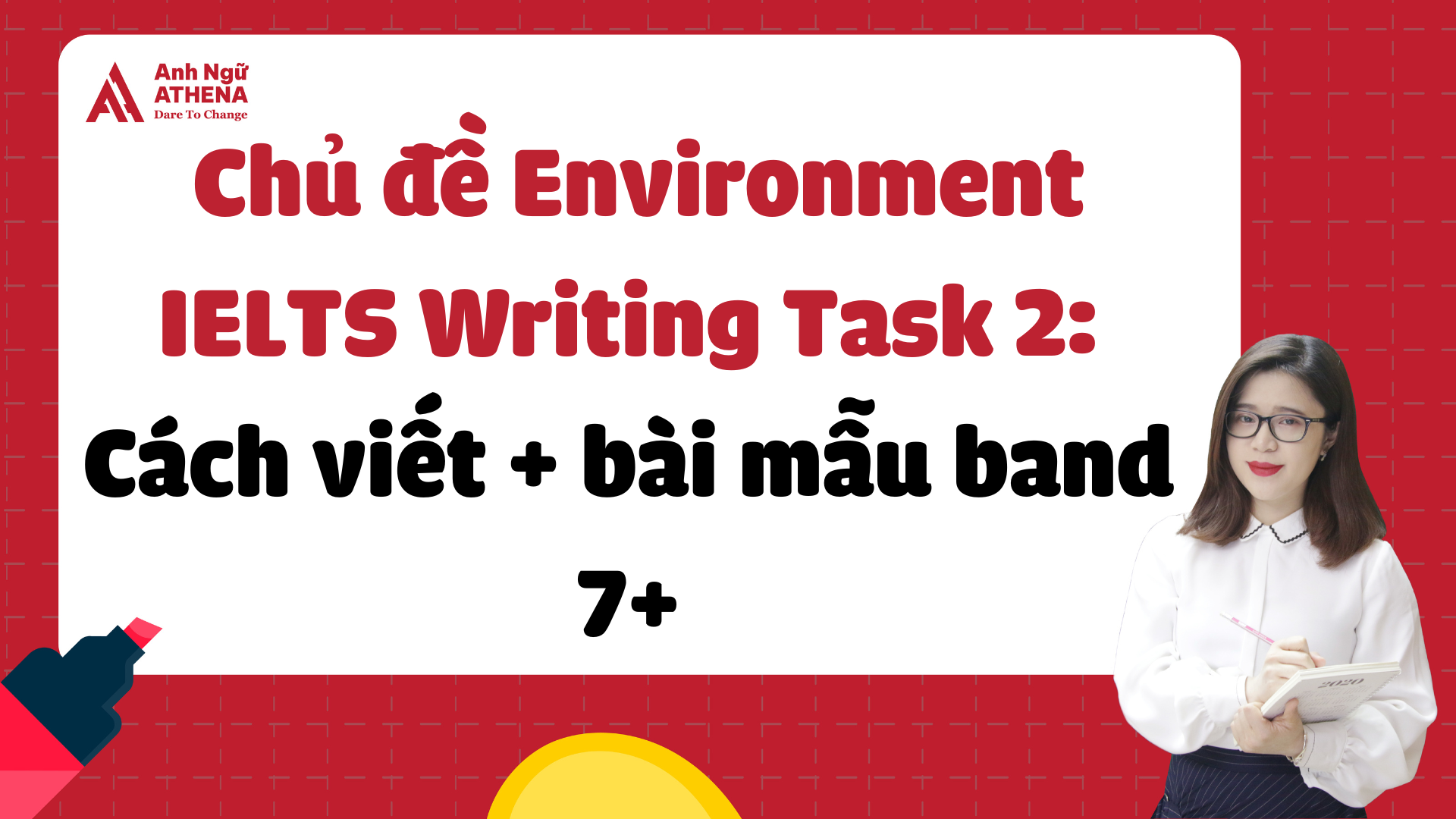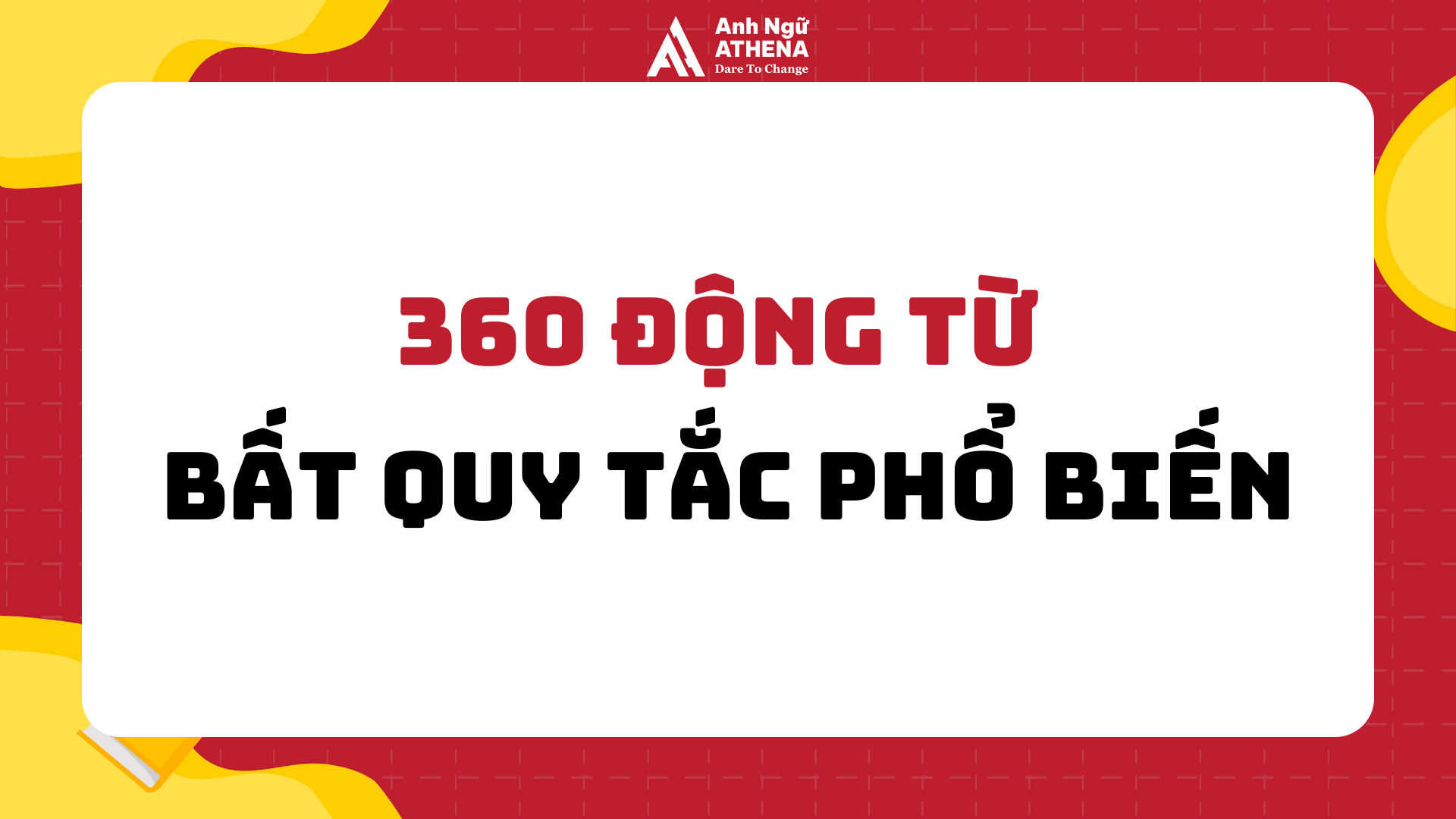Giải đề Cambridge IELTS 18, Test 1, Reading Passage 2 chi tiết
Bài viết dưới đây gửi đến các bạn phần giải chi tiết đề Cambridge IELTS 18, Test 1, Reading Passage 2 kèm bài phân tích đoạn văn, từ vựng giúp các bạn tự tin chinh phục band điểm IELTS mong muốn.
Đề Cambridge IELTS 18, Test 1, Reading Passage 2
Forest management in Pennsylvania, USA
How managing low-quality wood (also known as low-use wood) for bioenergy can encourage sustainable forest management.
A. A tree’s ‘value’ depends on several factors including its species, size, form, condition, quality, function, and accessibility, and depends on the management goals for a given forest. The same tree can be valued very differently by each person who looks at it. A large, straight black cherry tree has high value as timber to be cut into logs or made into furniture, but for a landowner more interested in wildlife habitat, the real value of that stem (or trunk) may be the food it provides to animals. Likewise, if the tree suffers from black knot disease, its value for timber decreases, but to a woodworker interested in making bowls, it brings an opportunity for a unique and beautiful piece of art.
B. In the past, Pennsylvania landowners were solely interested in the value of their trees as high-quality timber. The norm was to remove the stems of highest quality and leave behind poorly formed trees that were not as well suited to the site where they grew. This practice, called ‘high-grading’, has left a legacy of ‘low-use wood’ in the forests. Some people even call these ‘junk trees’, and they are abundant in Pennsylvania. These trees have lower economic value for traditional timber markets, compete for growth with higher-value trees, shade out desirable regeneration and decrease the health of a stand leaving it more vulnerable to poor weather and disease.
C. Wood energy markets can accept less expensive wood material of lower quality than would be suitable for traditional timber markets. Most wood used for energy in Pennsylvania is used to produce heat or electricity through combustion. Many schools and hospitals use wood boiler systems to heat and power their facilities, many homes are primarily heated with wood, and some coal plants incorporate wood into their coal streams to produce electricity. Wood can also be gasified for electrical generation and can even be made into liquid fuels like ethanol and gasoline for lorries and cars. All these products are made primarily from low-use wood. Several tree- and plant-cutting approaches, which could greatly improve the long-term quality of a forest, focus strongly or solely on the use of wood for those markets.
D. One such approach is called a Timber Stand Improvement (TSI) Cut. In a TSI Cut, really poor-quality tree and plant material is cut down to allow more space, light, and other resources to the highest-valued stems that remain. Removing invasive plants might be another primary goal of a TSI Cut. The stems that are left behind might then grow in size and develop more foliage and larger crowns or tops that produce more coverage for wildlife; they have a better chance to regenerate in a less crowded environment. TSI Cuts can be tailored to one farmer’s specific management goals for his or her land.
E. Another approach that might yield a high amount of low-use wood is a Salvage Cut. With the many pests and pathogens visiting forests including hemlock wooly adelgid, Asian longhorned beetle, emerald ash borer, and gypsy moth, to name just a few, it is important to remember that those working in the forests can help ease these issues through cutting procedures. These types of cut reduce the number of sick trees and seek to manage the future spread of a pest problem. They leave vigorous trees that have stayed healthy enough to survive the outbreak.
F. A Shelterwood Cut, which only takes place in a mature forest that has already been thinned several times, involves removing all the mature trees when other seedlings have become established. This then allows the forester to decide which tree species are regenerated. It leaves a young forest where all trees are at a similar point in their growth. It can also be used to develop a two-tier forest so that there are two harvests and the money that comes in is spread out over a decade or more.
G. Thinnings and dense and dead wood removal for fire prevention also center on the production of low-use wood. However, it is important to remember that some retention of what many would classify as low-use wood is very important. The tops of trees that have been cut down should be left on the site so that their nutrients cycle back into the soil. In addition, trees with many cavities are extremely important habitats for insect predators like woodpeckers, bats and small mammals. They help control problem insects and increase the health and resilience of the forest. It is also important to remember that not all small trees are low-use. For example, many species like hawthorn provide food for wildlife. Finally, rare species of trees in a forest should also stay behind as they add to its structural diversity.
Questions 14-18: Reading Passage 2 has seven paragraphs, A-G. Which paragraph contains the following information? Write the correct letter, A-G, in boxes 14—18 on your answer sheet.
NB You may use any letter more than once.
14. bad outcomes for a forest when people focus only on its financial reward
15. reference to the aspects of any tree that contribute to its worth
16. mention of the potential use of wood to help run vehicles
17. examples of insects that attack trees
18. an alternative name for trees that produce low-use wood
Questions 19–21: Look at the following purposes (Questions 19—21) and the list of timber cuts below. Match each purpose with the correct timber cut, A, B or C. Write the correct letter, A, B or C, in boxes 19—21 on your answer sheet.
NB You may use any letter more than once.
19. to remove trees that are diseased
20. to generate income across a number of years
21. to create a forest whose trees are close in age
List of Timber Cuts
- a TSI Cut
- a Salvage Cut
- a Shelterwood Cut
Questions 22-26: Complete the sentences below. Choose ONE WORD ONLY from the passage for each answer. Write your answers in boxes 22-26 on your answer sheet.
22 Some dead wood is removed to avoid the possibility of ………
23. The …….. from the tops of cut trees can help improve soil quality.
24. Some damaged trees should be left, as their ………… provide habitats for a range of creatures.
25. Some trees that are small, such as ……… ,are a source of food for animals and insects.
26. Any trees that are ……… should be left to grow, as they add to the variety of species in the forest.
Đáp án đề Cambridge IELTS 18, Test 1, Reading Passage 2
| Câu hỏi | Đáp án |
| 14 | B |
| 15 | A |
| 16 | C |
| 17 | E |
| 18 | B |
| 19 | B |
| 20 | C |
| 21 | C |
| 22 | fire |
| 23 | nutrients |
| 24 | cavities |
| 25 | hawthorn |
| 26 | rare |
Giải thích chi tiết đáp án Cambridge IELTS 18, Test 1, Reading Passage 2
3.1. Questions 14 - 21
Question 14: Xác định vị trí của 14. bad outcomes for a forest when people focus only on its financial reward. (14. kết quả xấu cho một khu rừng khi con người chỉ tập trung vào phần thưởng tài chính của nó).
- Đáp án: B.
- Vị trí: In the past, Pennsylvania landowners were solely interested in the value of their trees as high-quality timber. The norm was to remove the stems of highest quality and leave behind poorly formed trees that were not as well suited to the site where they grew. This practice, called 'high-grading', has left a legacy of 'low-use wood' in the forests. Some people even call these 'junk trees", and they are abundant in Pennsylvania. These trees have lower economic value for traditional timber markets, compete for growth with higher-value trees, shade out desirable regeneration and decrease the health of a stand leaving it more vulnerable to poor weather and disease. Management that specifically targets low-use wood can help landowners manage these forest health issues, and wood energy markets help promote this. (Trước đây, các chủ đất ở Pennsylvania chỉ quan tâm đến giá trị gỗ chất lượng cao của cây của họ. Tiêu chuẩn là loại bỏ những thân cây có chất lượng cao nhất và để lại những cây có hình dáng kém, không phù hợp với địa điểm chúng mọc. Cách làm này, được gọi là 'phân loại cao', đã để lại di sản 'gỗ ít sử dụng' trong rừng. Một số người thậm chí còn gọi những cây này là "cây rác" và chúng có rất nhiều ở Pennsylvania. Những cây này có giá trị kinh tế thấp hơn đối với thị trường gỗ truyền thống, cạnh tranh sinh trưởng với những cây có giá trị cao hơn, che khuất khả năng tái sinh mong muốn và làm giảm sức khỏe của cây để lại nó. dễ bị tổn thương hơn trước thời tiết xấu và bệnh tật. Việc quản lý nhắm mục tiêu cụ thể đến gỗ ít sử dụng có thể giúp chủ đất quản lý các vấn đề sức khỏe rừng này và thị trường năng lượng gỗ giúp thúc đẩy điều này.).
- Giải thích: Đoạn văn B có đề cập đến thông tin các chủ đất ở Pennsylvania chỉ quan tâm đến giá trị và khai thác những cây có chất lượng gỗ cao “solely interested in the value of their trees as high-quality timber”, nhóm cây có giá trị kinh tế thấp hơn sẽ bị để lại, khiến giảm tỉ lệ tái sinh như mong muốn (“shade out desirable regeneration”) và khiến những quần thể cây ở đó yếu đi, dễ bị ảnh hưởng bởi thời tiết xấu và bệnh tật (“decrease the health of a stand leaving it more vulnerable to poor weather and disease”). Vì vậy, đáp án là B.
Question 15: Xác định vị trí của 15. reference to the aspects of any tree that contribute to its worth (15. đề cập đến các khía cạnh của bất kỳ cây nào góp phần tạo nên giá trị của nó).
- Đáp án: A.
- Vị trí: A tree's 'value' depends on several factors including its species, size, form, condition, quality, function, and accessibility, and depends on the management goals for a given forest. The same tree can be valued very differently by each person who looks at it. A large, straight black cherry tree has high value as timber to be cut into logs or made into furniture, but for a landowner more interested in wildlife habitat, the real value of that stem (or trunk) may be the food it provides to animals. Likewise, if the tree suffers from black knot disease, its value for timber decreases, but to a woodworker interested in making bowls, it brings an opportunity for a unique and beautiful piece of art. ('giá trị' của cây phụ thuộc vào một số yếu tố bao gồm loại, kích thước, hình thức, tình trạng, chất lượng, chức năng và khả năng tiếp cận, đồng thời phụ thuộc vào mục tiêu quản lý đối với một khu rừng nhất định. Cùng một cái cây có thể được đánh giá rất khác nhau bởi mỗi người nhìn vào nó. Một cây anh đào đen, to, thẳng có giá trị cao ở dạng gỗ được xẻ thành khúc hoặc làm đồ nội thất, nhưng đối với một chủ đất quan tâm hơn đến môi trường sống của động vật hoang dã, giá trị thực sự của thân cây (hoặc thân cây) đó có thể là thức ăn mà nó cung cấp cho động vật . Tương tự như vậy, nếu cây bị bệnh nốt đen, giá trị gỗ của nó sẽ giảm đi, nhưng đối với một người thợ mộc thích làm bát, nó lại mang đến cơ hội tạo ra một tác phẩm nghệ thuật đẹp và độc đáo).
- Đoạn văn A có đề cập đến thông tin 'Giá trị' của cây (“value” khớp với “worth”) phụ thuộc vào một số yếu tố (“factors” khớp với “aspects”) bao gồm loại, kích thước, hình thức, tình trạng, chất lượng, chức năng và khả năng tiếp cận cũng như phụ thuộc vào các mục tiêu quản lý đối với một khu rừng nhất định. Vì vậy, đáp án là A.
Question 16: Xác định vị trí của 16. mention of the potential use of wood to help run vehicles. (16. đề cập đến tiềm năng sử dụng gỗ để giúp chạy động cơ).
- Đáp án: C.
- Vị trí: Wood can also be gasified for electrical generation and can even be made into liquid fuels like ethanol and gasoline for lorries and cars. All these products are made primarily from low-use wood. (Gỗ cũng có thể được khí hóa để phát điện và thậm chí có thể được chế tạo thành nhiên liệu lỏng như ethanol và xăng cho xe tải và ô tô. Tất cả các sản phẩm này đều được làm chủ yếu từ gỗ ít sử dụng.)
- Giải thích: Đoạn văn C có đề cập đến thông tin gỗ có thể được chế tạo thành nhiên liệu lỏng như ethanol và xăng cho xe tải và ô tô (“lorries and cars” khớp với “vehicles”). Vì vậy, đáp án là C.
Question 17: Xác định vị trí của 17. examples of insects that attack trees. ( 17. ví dụ về côn trùng tấn công cây cối).
- Đáp án: E.
- Vị trí: With the many pests and pathogens visiting forests including hemlock wooly adelgid, Asian longhorned beetle, emerald ash borer, and gypsy moth, to name just a few, it is important to remember that those working in the forests can help ease these issues through cutting procedures. (Với rất nhiều loài gây hại và mầm bệnh xâm nhập vào các khu rừng bao gồm cả loài bọ cánh cứng độc cần, bọ sừng dài châu Á, sâu đục thân ngọc lục bảo và sâu bướm gypsy, chỉ kể tên một số loài, điều quan trọng cần nhớ là những người làm việc trong rừng có thể giúp giảm bớt những vấn đề này thông qua quá trình cắt).
- Giải thích: Đoạn văn E có đề cập đến thông tin nhiều loài gây hại và mầm bệnh đến các khu rừng như wooly adelgid (tạm dịch: loài côn trùng giống rệp tấn công và giết chết cây độc cần) , Asian longhorned beetle (tạm dịch:bọ cánh cứng sừng dài châu Á), emerald ash borer (tạm dịch: sâu đục thân), và gypsy moth (tạm dịch: sâu róm sồi). Vì vậy, đáp án là E.
Question 18: Xác định vị trí của 18. an alternative name for trees that produce low-use wood. (18. tên thay thế cho cây sản xuất gỗ ít sử dụng).
- Đáp án: B.
- Vị trí: This practice, called 'high-grading', has left a legacy of 'low-use wood' in the forests. Some people even call these 'junk trees", and they are abundant in Pennsylvania. These trees have lower economic value for traditional timber markets, compete for growth with higher-value trees, shade out desirable regeneration and decrease the health of a stand leaving it more vulnerable to poor weather and disease. (Cách làm này, được gọi là 'phân loại cao', đã để lại di sản 'gỗ ít sử dụng' trong rừng. Một số người thậm chí còn gọi những cây này là "cây rác" và chúng có rất nhiều ở Pennsylvania. Những cây này có giá trị kinh tế thấp hơn đối với thị trường gỗ truyền thống, cạnh tranh sinh trưởng với những cây có giá trị cao hơn, che khuất khả năng tái sinh mong muốn và làm giảm sức khỏe của cây để lại nó. dễ bị tổn thương hơn trước thời tiết xấu và bệnh tật).
- Đoạn văn B có đề cập đến thông tin một số người thậm chí còn gọi 'gỗ ít sử dụng' trong rừng là 'cây rác'. Vì vậy, đáp án là B.
Question 19: to remove trees that are diseased (loại bỏ những cây bị bệnh).
- Đáp án: B.
- Vị trí: Another approach that might yield a high amount of low-use wood is a Salvage Cut. With the many pests and pathogens visiting forests including hemlock woolly adelgid, Asian longhorned beetle, emerald ash borer, and gypsy moth, to name just a few, it is important to remember that those working in the forests can help ease these issues through cutting procedures. These types of cut reduce the number of sick trees and seek to manage the future spread of a pest problem. They leave vigorous trees that have stayed healthy enough to survive the outbreak. (Một phương pháp khác có thể mang lại lượng lớn gỗ ít sử dụng là Cắt tận dụng. Với nhiều loài gây hại và mầm bệnh xâm nhập vào các khu rừng, bao gồm cả loài bọ cánh cứng độc cần, bọ sừng dài châu Á, sâu đục thân ngọc lục bảo và sâu bướm gypsy, chỉ kể tên một số loài, điều quan trọng cần nhớ là những người làm việc trong rừng có thể giúp giảm bớt những vấn đề này thông qua quy trình chặt cây . Những kiểu cắt này làm giảm số lượng cây bị bệnh và tìm cách quản lý sự lây lan của vấn đề sâu bệnh trong tương lai. Họ để lại những cây khỏe mạnh đủ sức sống sót sau đợt bùng phát).
- Giải thích: Đoạn E có đề cập đến thông tin “Salvage Cut” sẽ làm giảm số lượng cây bị bệnh (“reduce the number of trees” khớp với “remove trees”, “sick” khớp với “diseased” ).Vì vậy, đáp án là B. a Salvage Cut.
Question 20: to generate income across a number of years (để tạo ra thu nhập trong nhiều năm).
- Đáp án: C.
- Vị trí: A Shelterwood Cut, which only takes place in a mature forest that has already been thinned several times, involves removing all the mature trees when other seedlings have become established. This then allows the forester to decide which tree species are regenerated. It leaves a young forest where all trees are at a similar point in their growth. It can also be used to develop a two-tier forest so that there are two harvests and the money that comes in is spread out over a decade or more (Việc chặt cây Shelterwood chỉ diễn ra trong một khu rừng trưởng thành đã bị tỉa thưa nhiều lần, liên quan đến việc loại bỏ tất cả các cây trưởng thành khi các cây con khác đã hình thành. Điều này sau đó cho phép người lâm nghiệp quyết định loài cây nào được tái sinh. Nó để lại một khu rừng non, nơi tất cả các cây đều ở một điểm phát triển giống nhau. Nó cũng có thể được sử dụng để phát triển một khu rừng hai tầng để có hai vụ thu hoạch và số tiền thu được sẽ được chia đều trong một thập kỷ trở lên).
- Đoạn F có đề cập đến thông tin “Shelterwood Cut” cũng có thể được sử dụng để phát triển một khu rừng hai tầng để có hai vụ thu hoạch và số tiền (“money” khớp với “income”) thu được (“come in” khớp với “generate”) sẽ trải đều (“spread out” khớp với “across”) trong một thập kỷ trở lên (“over a decade or more” khớp với “a number of years”). Vì vậy, đáp án là C. a Shelterwood Cut.
Question 21: to create a forest whose trees are close in age (để tạo ra một khu rừng có cây gần tuổi).
- Đáp án: C.
- Vị trí: A Shelterwood Cut, which only takes place in a mature forest that has already been thinned several times, involves removing all the mature trees when other seedlings have become established. This then allows the forester to decide which tree species are regenerated. It leaves a young forest where all trees are at a similar point in their growth (Việc chặt cây Shelterwood chỉ diễn ra trong một khu rừng trưởng thành đã bị tỉa thưa nhiều lần, liên quan đến việc loại bỏ tất cả các cây trưởng thành khi các cây con khác đã hình thành. Điều này sau đó cho phép người lâm nghiệp quyết định loài cây nào được tái sinh. Nó để lại một khu rừng non, nơi tất cả các cây đều ở một điểm phát triển giống nhau).
- Giải thích: Đoạn F có đề cập đến thông tin “Shelterwood Cut” sẽ giúp tạo một khu rừng (“leaves a young forest” khớp với “create a forest”) nơi tất cả các cây đều ở cùng một điểm (“at a similar point” khớp với “close in age”) trong quá trình sinh trưởng. Vì vậy, đáp án là C. a Shelterwood Cut
3.2. Questions 22 - 26
Question 22: Some dead wood is removed to avoid the possibility of ……… (Một số gỗ chết được loại bỏ để tránh khả năng ………)
- Đáp án: fire.
- Vị trí: Thinnings and dense and deadwood removal for fire prevention also center on the production of low-use wood (Tỉa thưa, loại bỏ gỗ dày đặc, gỗ chết để phòng cháy cũng tập trung vào sản xuất gỗ ít sử dụng).
- Giải thích:
+ Từ loại cần điền: danh từ.
+ Nội dung: lý do những gỗ cây chết bị loại bỏ.
+ Bài đọc thể hiện nội dung rằng cần tỉa thưa và loại bỏ gỗ chết để phòng cháy (“deadwood removal” khớp với “Some deadwood is removed” và “prevention” khớp với “avoid”. Vì vậy, đáp án là “fire”.
Question 23: The ……… from the tops of cut trees can help improve soil quality (Việc …… từ ngọn cây bị chặt có thể giúp cải thiện chất lượng đất.).
- Đáp án: nutrients.
- Vị trí: The tops of trees that have been cut down should be left on the site so that their nutrients cycle back into the soil (Vị trí: Phần ngọn của cây đã bị đốn hạ nên được để lại trên địa bàn để chất dinh dưỡng của chúng quay trở lại đất).
- Giải thích:
- Từ loại cần điền: danh từ.
- Nội dung: một thứ ở ngọn những cây được đốn hạ có thể giúp tăng chất lượng đất.
- Bài đọc thể hiện nội dung rằng những ngọn cây đã bị chặt được để lại ở nguyên vị trí, rồi các chất dinh dưỡng của những ngọn này sẽ luân chuyển trở lại vào đất (“The tops of trees that have been cut down” khớp với “the tops of cut trees” và “cycle back into the soil” khớp với “improve soil quality” trong đề). Vì vậy, đáp án là “nutrients”.
Question 24: Some damaged trees should be left, as their …… provide habitats for a range of creatures (Một số cây bị hư hỏng nên được để lại vì …… của chúng cung cấp môi trường sống cho nhiều loại sinh vật).
- Đáp án: cavities.
- Vị trí: In addition, trees with many cavities are extremely important habitats for insect predators like woodpeckers, bats and small mammals (Ngoài ra, cây có nhiều hốc là môi trường sống cực kỳ quan trọng đối với các loài săn côn trùng như chim gõ kiến, dơi và các loài thú nhỏ).
- Giải thích:
- Từ loại cần điền: danh từ.
- Nội dung: Một thứ của cây bị phá hủy sẽ giúp cung cấp môi trường sống cho nhiều loài sinh vật.
- Bài đọc thể hiện nội dung những cây có nhiều hốc là môi trường sống cực kỳ quan trọng đối với các loài côn trùng săn mồi như chim gõ kiến, dơi và động vật có vú nhỏ (“extremely important habitats” khớp với “provide habitats” và “insect predators” khớp với “a range of creatures” trong đề). Vì vậy, đáp án là “cavities”.
Question 25: Some trees that are small, such as ……, are a source of food for animals and insects (Một số cây nhỏ, chẳng hạn như …………………, là nguồn thức ăn cho động vật và côn trùng).
- Đáp án: hawthorn.
- Vị trí: It is also important to remember that not all small trees are low-use. For example, many species like hawthorn provide food for wildlife (Điều quan trọng cần nhớ là không phải tất cả các cây nhỏ đều ít được sử dụng. Ví dụ, nhiều loài như táo gai cung cấp thức ăn cho động vật hoang dã).
- Giải thích:
- Từ loại cần điền: danh từ.
- Nội dung: một loài cây nhỏ là nguồn thức ăn cho động vật và côn trùng.
- Bài đọc thể hiện nội dung rằng không phải tất cả các cây nhỏ đều ít sử dụng. Ví dụ, nhiều loài như táo gai cung cấp thức ăn cho động vật hoang dã (“provide food for wildlife” khớp với “a source of food for animals and insects” trong đề). Vì vậy, đáp án là “hawthorn”.
Question 26: Any trees that are ……… should be left to grow, as they add to the variety of species in the forest (Bất kỳ cây nào ……… nên được để lại để phát triển, vì chúng làm tăng thêm sự đa dạng của các loài trong rừng).
- Đáp án: rare.
- Vị trí: Finally, rare species of trees in a forest should also stay behind as they add to its structural diversity (Cuối cùng, các loài cây quý hiếm trong rừng cũng nên được giữ lại vì chúng làm tăng thêm sự đa dạng về cấu trúc của nó).
- Giải thích:
- Từ loại cần điền: tính từ/ danh từ.
- Nội dung: một đặc điểm của cây khiến chúng nên được để lại phát triển ở trong rừng nhằm đa dạng các loài trong rừng.
- Bài đọc thể hiện nội dung các loài cây quý hiếm trong rừng cũng nên ở lại giữ lại vì chúng sẽ làm đa dạng về cấu trúc của rừng (“also stay behind” khớp với “should be left to grow”, “structural diversity” khớp với “the variety of species” trong đề). Vì vậy, đáp án là “rare”.
Tổng kết
Bài viết trên đã giải thích đáp án cho đề Cambridge IELTS 18, Test 1, Reading Passage 2 giúp các bạn dễ dàng ôn tập và hiểu rõ hơn về bài đọc. Các bạn hãy thường xuyên ôn tập, mở rộng vốn từ của mình để có thể chinh phục kỹ năng Reading với số điểm cao nhất nhé! Đừng quên tham khảo khóa học IELTS toàn diện từ 0 đạt 6.5-8.0+ dành cho người mất gốc tại Athena nếu như các bạn chưa biết bắt đầu từ đâu.
- Lộ trình học “tối giản”, “tối ưu” giúp bạn nắm vững kiến thức cơ bản, và nắm chắc tấm bằng IELTS 6.5+ trong tầm tay.
- Giáo trình và phương pháp được chính Ths. Đỗ Vân Anh (8.5 IELTS với 10 năm kinh nghiệm giảng dạy TOEIC/IELTS) biên soạn và giảng dạy trực tiếp.
- Học phí “nhẹ ví” với các bạn sinh viên: Khóa IELTS từ mất gốc đến 6.5+ tại Athena là lựa chọn phù hợp với các bạn sinh viên mong muốn sở hữu tấm bằng IELTS với chi phí thấp nhưng chất lượng cao:
- Học phí khóa từ 0-8.0+ tại Athena chỉ nhỉnh hơn 8 triệu (đã bao gồm tài liệu và cam kết ko phát sinh chi phí trong quá trình học).
- Ngoài ra, Athena tặng 1 buổi speaking 1-1 với cô Vân Anh hàng tuần để cô sửa trực tiếp cho các bạn.
- Athena hỗ trợ 50% lệ phí thi tương đương 2tr375.
- Ngoài ra, Athena còn trao học bổng định kỳ với các bạn đạt điểm IELTS như mong ước.
Thông tin chi tiết về khoá học IELTS từ 0 đạt 6.5-8.0 của Athena TẠI ĐÂY.

Tìm hiểu thêm:
- Giải đề Cambridge IELTS 18, Test 1, Reading Passage 1 chi tiết
- [Full Transcript] Chi tiết giải đề Cambridge IELTS 18, Test 1, Listening Part 1: Transport survey
- Chi tiết giải đề Cambridge IELTS 18, Test 1, Listening Part 2: Becoming a volunteer for ACE










